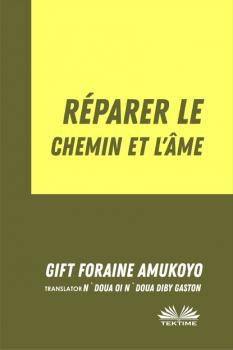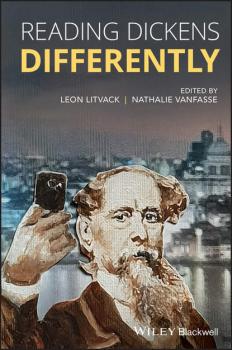ТОП просматриваемых книг сайта:
Критика
Различные книги в жанре Критика, доступные для чтения и скачиванияАннотация
“Une adoration métaphorique de mots gravée dans des images cohérentes : le tot accrochant. Votre diction, comme une capsule de vie, qui contraint l'imaginaire humain à conceptualiser et à nourrir. Un enrobage de la joie et de la tristesse. Le cordage de cette capsule au son, au ton, à l'humeur et à d'autres caractéristiques paralinguistiques pour mettre en amont le sens et être esthétiquement agréable à l'esprit”. -Udensi Udensi Literary Reviewe “Ce poème est sensuel, solennel, saisissant et sacré. Je ressens les pressions d'une tranquillité positive”. -Professeur d'Onomastique Littéraire, Center for Graduate Studies (Centre d'Études Supérieures), Nodia International University (Université internationale de Nodia), Uttar Pradesh, Inde “Notre monde n'est rien d'autre qu'un lieu de passage joyeux et troublé et les poèmes de Gift Foraine Amukoyo relèvent brillamment ce thème”-Ogunbowale Olusegun'tayo “De l'intérieur…Quelque part derrière le cœur…Où les humains sentent… Et se font sentir… C'est tout le sens de ce vers… ” -Chiyasa Ezeezeh Ikwuemesibe, Poète et critique littéraire. Photo de couverture CHRIS ARTY Ginny Gin
Аннотация
Курс из 21 эссе поможет школьникам и студентам, профессионалам и любителям в освоении оперной истории. Эмоциональный подход автора к тому, что обычно сухо излагается в учебниках по музыкальной литературе, можно рассматривать и как учебное пособие, и как приятное чтение. Автор отталкивается от собственного ощущения взаимодействия музыки и слова на протяжении четырехсот лет оперной истории. В книге вы найдете эссе о современной оперной режиссуре, хронологию оперных премьер.
Аннотация
Эта книга – пунктирный итог работы нескольких поколений поэтов, нескольких веков. Здесь кратко даны основные вехи судьбы и творчества поэтов, наиболее интересные, порой курьёзные, порой драматические события в их реальной жизни.Книга может стать методическим пособием для освоения основ русский классики в школах, колледжах, университетах.
Аннотация
Книга содержит четыре новые сказки для топ-менеджеров с комментариями автора:«Каша из топора»,«Сивко-бурко»,«Гуси-лебеди»,«Спящая царевна».Это хороший подарок для высших руководителей, обладающих чувством юмора.
Война и мир. 1805-1812 с исторической точки зрения и по воспоминаниям современника. По поводу сочинения графа Л.Н.Толстого «Война и мир» - Авраам Сергеевич Норов
Аннотация
Под заглавием «Война и мир» вышло сочинение графа Толстого, в котором он, в виде романа, представляет нам не один какой-либо эпизод из нашего общественного и военного быта, но довольно длинную эпоху войны и мира…; но как велико разочарование, когда вы увидите, что громкий славою 1812 год, как в военном, так и в гражданском быту, представлен нам мыльным пузырем; что целая фаланга наших генералов, которых боевая слава прикована к нашим военным летописям, и которых имена переходят доселе из уст в уста нового военного поколения, составлена была из бездарных, слепых орудий случая, действовавших иногда удачно, и об этих даже их удачах говорится только мельком, и часто с ирониею. Неужели таково было наше общество, неужели такова была наша армия, спрашивали меня многие?
Аннотация
Historical Narrative Offers Introduction to Romanticism by Placing Key Figures in Overall Social Context Going beyond the general literary survey, A History of Romantic Literature examines the literatures of sensibility and intensity as well as the aesthetic dimensions of horror and terror, sublimity and ecstasy, by providing a richly integrated account of shared themes, interests, innovations, rivalries and disputes among the writers of the late eighteenth and early nineteenth centuries. Drawing from the assemblage theory, Prof. Burwick maintains that the literature of the period is inseparable from prevailing economic conditions and ongoing political and religious turmoil, as well as developments in physics, astronomy, music and art. Thus, rather than deal with authors as if they worked in isolation from society, he identifies and describes their interactions with their communities and with one another, as well as their responses to current events. By connecting seemingly scattered and random events such as the bank crisis of 1825, he weaves the coincidental into a coherent narrative of the networking that informed the rise and progress of Romanticism. Notable features of the book include: A strong narrative structure divided into four major chronological periods: Revolution, 1789-1798; Napoleonic Wars, 1799-1815; Riots, 1815-1820; Reform, 1821-1832 Thorough coverage of major and minor figures and institutions of the Romantic movement (including Mary Wollstonecraft, Elizabeth Montague and the Bluestockings, Lord Byron, John Keats, Letitia Elizabeth Landon etc. ) Emphasis on the influence of social networks among authors, such as informal dinners and teas, clubs, salons and more formal institutions With its extensive coverage and insightful analysis set within a lively historical narrative, History of Romantic Literature is highly recommended for courses on British Romanticism at both undergraduate and post-graduate levels. It will also prove a highly useful reference for advanced scholars pursuing their own research.
Аннотация
What distinguishes fiction from ordinary experience is not a lack of reality but a surfeit of rationality – this was the thesis of Aristotle’s Poetics. The rationality of fiction is that appearances are inverted. Fiction overturns the ordinary course of events that occur one after the other, aiming to show how the unexpected arises, happiness transforms into unhappiness and ignorance into knowledge. In the modern age, argues Rancière, this fictional rationality was developed in new ways. The social sciences extended the model of causal linkage to all spheres of human action, seeking to show us how causes produce their effects by inverting appearances and expectations. Literature took the opposite path. Instead of democratizing fictional rationality to include all human activity in the world of rational knowledge, it destroyed its principles by abolishing the limits that circumscribed a reality peculiar to fiction. It aligned itself with the rhythms of everyday life and plumbed the power of the “random moment” into which an entire life is condensed. In the avowed fictions of literature as well as in the unavowed fictions of politics, social science or journalism, the central question is the same: how to construct the perceptible forms of a shared world. From Stendhal to João Guimarães Rosa and from Marx to Sebald, via Balzac, Poe, Maupassant, Proust, Rilke, Conrad, Auerbach, Faulkner and some others, this book explores these constructions and sheds new light on the constitutive movement of modern fiction, the movement that shifted its centre of gravity from its traditional core toward those edges in which fiction gets confronted with its possible revocation.
Аннотация
A collection of original essays and innovative reading strategies—provides examples of reading Dickens in creative and challenging ways Reading Dickens Differently features contributions from many of the field’s leading scholars, offering creative ways of reading Dickens and enriching understanding of the most celebrated author of his time. A diverse range of innovative reading strategies—archival, historical, textual, and digital—representing new and exciting approaches to contemporary literary and cultural studies. This groundbreaking volume brings together literature, history, politics, painting, illustration, social media, video games, and other topics to reveal new opportunities to engage with the author's life and work. This unique book includes a re-evaluation of Dickens’ death and burial, new research data drawn from legal records and newspapers, assessments of well-known paintings and lesser-known illustrations, experimental readings of Dickens’ texts in digital form, and more. Much of the evidence presented has never been seen before, such as Dickens' funeral fee account from Westminster Abbey, Dickens' death certificate, and a telegram from Dickens' son asking for urgent assistance for his dying father. Revising and refreshing the critical strategies of traditional Dickens studies, this important volume: Features new research data on aspects of Dickens's life Discusses a range of innovative reading strategies (including physiological novel theory) for clarifying aspects of Dickens' work Examines the presence of Dickens in popular media and technology, such as Assassin’s Creed video game and A Christmas Carol iPad app Features rare illustrations, including documents and images relating to Dickens's death and funeral Edited by world authorities on Dickens and his manuscripts Authoritative, yet accessible, Reading Dickens Differently is a must-have book for Dickens specialists, instructors and students in Victorian fiction and Dickens courses, as well as general readers lookingfor innovative reading strategies of the author's work.
Аннотация
Shakespeare’s Theatre: A History examines the theatre spaces used by William Shakespeare, and explores these spaces in relation to the social and political framework of the Elizabethan era. The text journeys from the performing spaces of the provincial inns, guild halls and houses of the gentry of the Bard’s early career, to the purpose-built outdoor playhouses of London, including the Globe, the Theatre, and the Curtain, and the royal courts of Elizabeth and James I. The author also discusses the players for whom Shakespeare wrote, and the positioning—or dispositioning—of audience members in relation to the stage. Widely and deeply researched, this fascinating volume is the first to draw on the most recent archaeological work on the remains of the Rose and the Globe, as well as continuing publications from the Records of Early English Drama project. The book also explores the contentious view that the ‘plot’ of The Seven Deadly Sins (part II), provides unprecedented insight into the working practices of Shakespeare’s company and includes a complete and modernized version of the ‘plot’. Throughout, the author relates the practicalities of early modern playing to the evolving systems of aristocratic patronage and royal licensing within which they developed Insightful and engaging, Shakespeare’s Theatre is ideal reading for undergraduates, postgraduates, and scholars of literature and theatre studies.
Аннотация
In Roland Barthes's eyes, Philippe Sollers embodied the figure of the contemporary writer forever seeking something new. Thirty-six years after Barthes produced his study Sollers Writer, Sollers has written a book on the man who was his friend and who shared with him a total faith in literature as a force of invention and discovery, as a resource and an encyclopaedia. They met regularly, exchanged many letters and fought many battles together, against every kind of academicism, every political and ideological regression. Barthes shed light on Sollers's work in a series of articles that are still of great relevance today. Sollers, in turn, assumed the role of Barthes's publisher at Le Seuil from the publication of his Critical Essays in 1964, and was left deeply shocked and saddened by Barthes's death in 1980. In short, they were very close to each other, despite their differences, and Sollers expresses here what this meant at the time and what it continues to represent, highlighting the themes that sustained their friendship. The book also contains some thirty letters from Barthes to Sollers, completing our image of one of the most extraordinary partnerships in French literary life.










